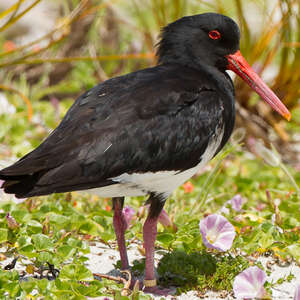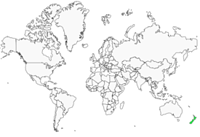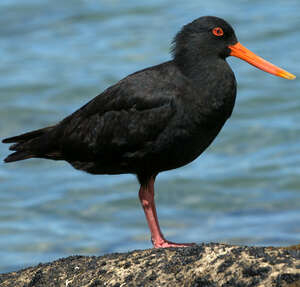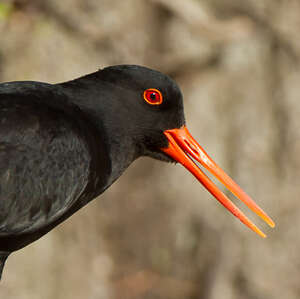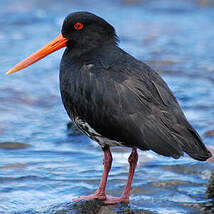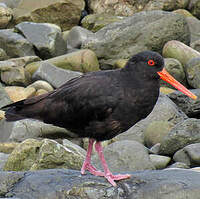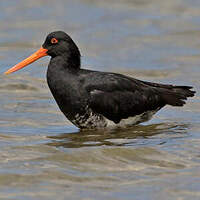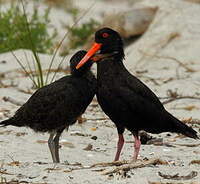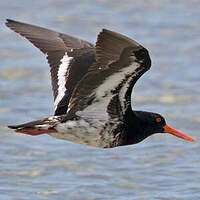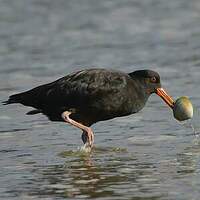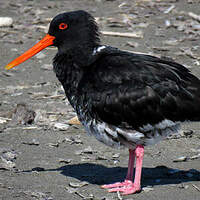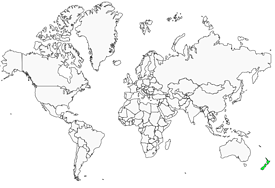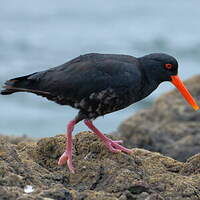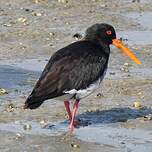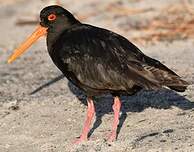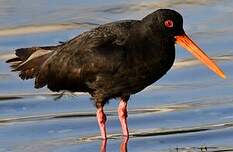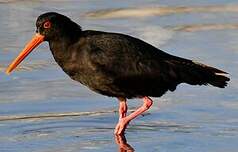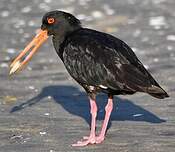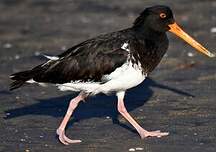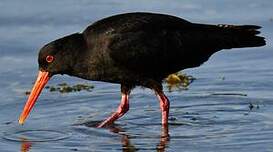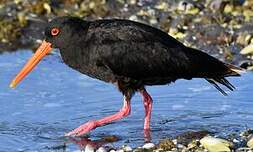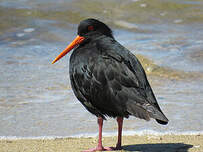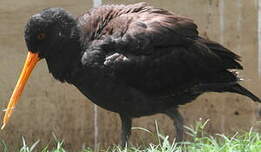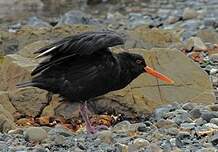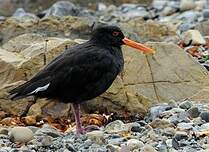Variable Oystercatcher
Haematopus unicolor - Huîtrier variable
Identification
As its name implies, the plumage is very variable... We find entirely black individuals and, at the other extreme of the cline, individuals very similar to our Oystercatcher. All the intermediates exist! Individuals in pie plumage can be confused with Finsch's Oystercatcher (Haematopus finschi), sometimes considered a subspecies of the Oystercatcher (H. ostralegus finschi), but the beak of the Variable Oystercatcher is much more powerful and the limit between black and white on the chest is never very clear. There is no white patch on the shoulders and the lower back (visible in flight) is heavily barred with black and not pure white. The Variable Oystercatcher is a coastal species while its congener is mainly an inland species, but both species coexist in winter.
Subspecific information monotypic species
Foreign names
- Huîtrier variable,
- Ostrero variable,
- ostraceiro-variável,
- Neuseeland-Austernfischer,
- változó csigaforgató,
- Nieuw-Zeelandse Zwarte Scholekster,
- Beccaccia di mare variabile,
- nyazeelandstrandskata,
- Todrakttjeld,
- lastúrničiar menlivý,
- ústřičník proměnlivý,
- Newzealandsk Strandskade,
- nokimeriharakka,
- garsa de mar variable,
- ostrygojad zmienny,
- Изменчивый кулик-сорока,
- ニュージーランドミヤコドリ,
- 新西兰蛎鹬,
- 雜色蠣鴴,
Habitat
Behaviour character trait
Very demonstrative! In November 2005 in the bays north of Auckland, I saw both gatherings of several hundred individuals and couples in full nuptial parades.
The two partners run side by side for several tens of meters then the two separate. Often, one of them flattens itself to the ground while the other runs and shouts, its wings raised vertically before joining its partner.The species is considered as sedentary, the most important movements not exceeding a few tens of kilometers.
Can be very aggressive towards a potential danger during reproduction. Thus, on November 27, 2005 on the island of Ulva (off Stewart Island), I was violently taken apart by a couple that must have had a nest or hidden chicks. In turn, the two birds attacked me in flight, only turning off a few centimeters from my face!
Dietfeeding habits
The Variable Oystercatcher mainly feeds on live worms living in the sand as well as on molluscs (mussels and other bivalves opened with its beak), crabs and other small animals from the shore. It can snatch them from the surface, but also down in the mud or under seaweeds and other debris from the shore.
Reproduction nesting
Breeding takes place during Austral spring and summer, with the earliest egg-clutches laid in September, but the majority being laid in December and January. There is usually three eggs (sometimes two), laid in a shallow bowl scraped in the sand or the debris left by the sea. The incubation period lasts around one month and the young don't fly before 45 days.
Threats - protection
IUCN conservation status
concern
in the Wild
threatened
evaluated
This species is not considered to be threatened and its population (about 4,000 individuals at the end of the 1990s compared to 2,000 in the 1970s) is even increasing. However, this total remains low. The main threats are disturbances in breeding sites (beach driving, beach sports, dogs, etc.).
Sources of information
- IOC World Bird List (v14.1), Gill, F and D Donsker (Eds). 2024-04-18.
Other sources of interest
 Specification sheet created on
01/08/2023 by Georges Olioso
Specification sheet created on
01/08/2023 by Georges OliosoTranslation by AI Oiseaux.net
published: 23-03-2008 - Updated: 23-03-2008
© 1996-2024 Oiseaux.net
- Accipitriformes
- Aegotheliformes
- Anseriformes
- Apodiformes
- Apterygiformes
- Bucerotiformes
- Caprimulgiformes
- Cariamiformes
- Casuariiformes
- Charadriiformes
- Ciconiiformes
- Coliiformes
- Columbiformes
- Coraciiformes
- Cuculiformes
- Eurypygiformes
- Falconiformes
- Galliformes
- Gaviiformes
- Gruiformes
- Leptosomiformes
- Mesitornithiformes
- Musophagiformes
- Nyctibiiformes
- Opisthocomiformes
- Otidiformes
- Passeriformes
- Pelecaniformes
- Phaethontiformes
- Phoenicopteriformes
- Piciformes
- Podargiformes
- Podicipediformes
- Procellariiformes
- Psittaciformes
- Pterocliformes
- Rheiformes
- Sphenisciformes
- Steatornithiformes
- Strigiformes
- Struthioniformes
- Suliformes
- Tinamiformes
- Trogoniformes

